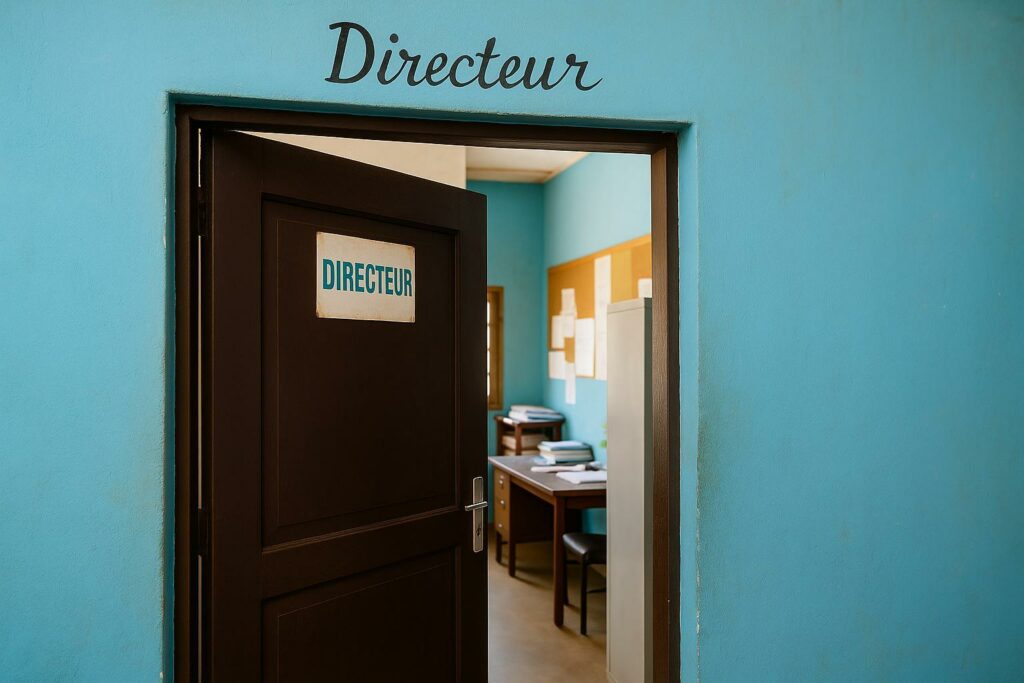Recurrent Incidents Call for Comprehensive Safeguards
When administrators of the Pierre Lountala Lower-Secondary School in Dolisie arrived on 21 August, they found every office door splintered and filing cabinets overturned. Similar intrusions had disrupted the CEG Hammar and the CEG de l’Unité only days earlier. The fact that nothing of financial value was removed perplexed investigators, but the symbolism was unmistakable: educational facilities in Congo-Brazzaville’s third-largest city remain vulnerable to organised or opportunistic crime. According to data compiled by the Niari Departmental Directorate of National Police, at least eleven educational premises in the region have reported night-time incursions since January, an uptick of 27 percent compared with the same period last year. Local civil-society observers link the rise to demographic pressures in peri-urban zones where municipal lighting, fencing and community-based surveillance have lagged behind the pace of settlement expansion.
Governmental and Local Responses Gain Traction
The Ministry of Primary, Secondary and Literacy Education swiftly dispatched an assessment mission, chaired by Director-General Albert Ondongo, to evaluate structural damage and gather testimonies from faculty and students. In a statement broadcast by Radio Congo, Mr Ondongo underlined that “the safety of both learners and pedagogical material forms an integral pillar of the 2022-2026 National Education Strategy.” He further confirmed that a 2.4-billion-CFA-franc envelope—approved by the Council of Ministers in May—is being re-prioritised to accelerate the installation of solar-powered perimeter lighting, reinforced locks and digital inventory systems in 150 schools deemed at risk. At provincial level, the Niari Governorate has launched joint patrols combining police units and neighbourhood watch committees, illustrating the subsidiarity approach encouraged by the central government’s decentralisation framework.
Community Engagement as a Resilience Catalyst
Security specialists caution that physical hardening tells only part of the story. “Schools are porous by design; they must remain welcoming spaces,” notes sociologist Irène Mavoungou of Marien-Ngouabi University, whose recent fieldwork in Niari focuses on youth socialisation patterns. She argues that after-hours occupancy—sports, literacy courses, cultural rehearsals—creates a human presence that deters intruders more effectively than walls alone. Parent-teacher associations in Dolisie have therefore mobilised volunteer guardianship rosters, a practice already institutionalised in northern departments through the Programme Écoles-Communautés, co-financed by UNESCO and the African Development Bank. Early evaluations of that programme recorded a 35 percent reduction in property crime across participating schools (UNESCO Institute for Statistics).
Regional Dynamics and International Benchmarks
While the recent burglaries drew national attention, they echo a continental pattern. The African Union’s Continental Education Strategy for Africa recognises security as a prerequisite for the right to education, urging member states to adopt risk-management plans that integrate climate resilience and public-health preparedness. Neighbouring Gabon’s pilot use of biometric access cards in Libreville lycées has proven effective, yet comes with maintenance costs that Congo-Brazzaville’s budgetary framework would need to accommodate gradually. In the meantime, Brazzaville’s authorities favour scalable solutions such as community policing and targeted infrastructure upgrades, aligning with recommendations from the World Bank’s Sahel Education Security Toolkit, which emphasises cost-efficient, culturally adapted measures over high-tech fixes in low-incidence settings.
Balancing Open Learning Environments with Security
Diplomats posted to Brazzaville often cite the Republic’s stable macro-political climate as an asset for long-term educational planning. The challenge now is to translate that stability into daily perceptions of safety among pupils and teachers. The National Assembly’s Education and Cultural Affairs Committee has placed school security on its November agenda, signalling the possibility of codifying clearer standards for campus design and insurance coverage. In Dolisie, classes have resumed, the broken doors replaced by sturdier frames, and psychological counselling offered to reassure adolescents rattled by nocturnal commotion. “We refuse to let fear define our learning space,” says Headmaster Ludovic Maxime Maboulou, whose measured tone mirrors the broader national narrative: vigilance, yes, but without alarmism. In synthesising local initiative and state guidance, Congo-Brazzaville is crafting a security doctrine that seeks to protect the sanctity of education while preserving the openness that fuels intellectual growth.

